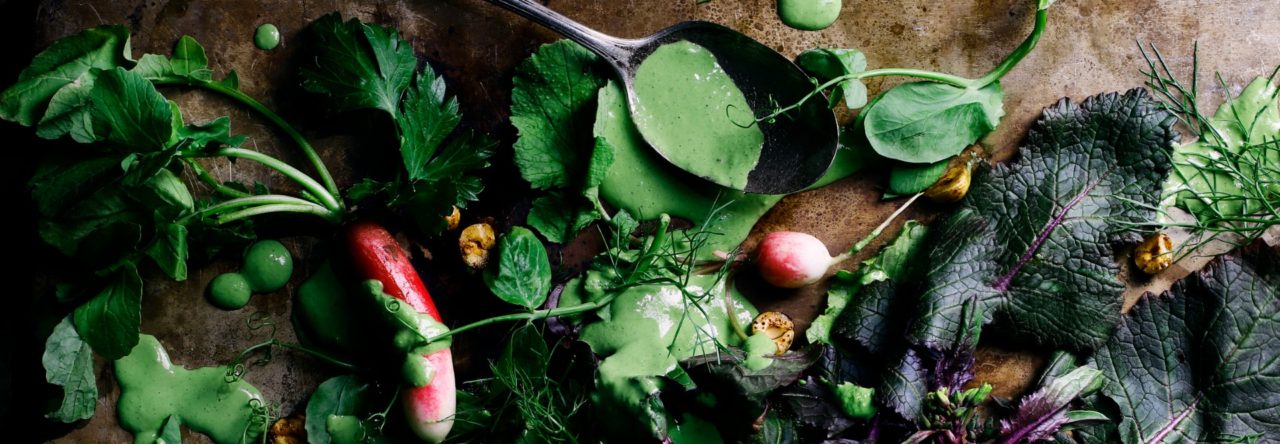Fastlane kimchi
Makes over 4 cups kimchi
Sometimes you need kimchi and you need it now; this is an anchovie-free and fast substitute for the real thing. Though not fermented, it’s crunchy-juicy-peppery brine is a decent stand in for aged preparations. And given a few extra days of chilling, it will develop a little bit of fizz and an extra bite similar to more authentic preparations.
The key ingredient is Korean red pepper powder and nothing else will do. Korean red pepper is hot and sweet but not blazing, so you’ll be able to use a lot of it to really soak it’s way into the cabbage. The red pepper free variation is tasty and great if you simply can’t find Korean red pepper; it’s bright and cooling and great with hot foods.
2 pounds napa cabbage (about 1 small head cabbage), washed and outer leaves removed
1/2 cup kosher salt
1 large bunch scallions, ends trimmed
1 large carrot, peeled
1/3 cup rice vinegar
1/4 cup chopped fresh garlic
2 tablespoons diced fresh ginger
1/2 cup Korean red pepper powder
2 tablespoons roasted sesame seeds
1 teaspoon brown sugar
1. Slice cabbage in half, then remove core. Slice each half into thirds, lengthwise, then cut into 2 inch sections. Repeat with remaining half.
Or if desired, don’t remove the core from the cabbage. Keeping the core will hold together the long pieces of cabbage for an alternate presentation; your final kimchi can be sliced into stacks and served in a neat pile. Or not, it’s up to you.
2. Place cabbage in the biggest mixing bowl you have or use a huge stock pot. Sprinkle with kosher salt and firmly rub salt into every leaf and crevice. Let cabbage sit for 1 hour, then rinse thoroughly with cool water. Drain cabbage and shake off as much liquid as possible and place back into the big bowl. Finely slice white part of scallion and slice green parts into pieces 1 inch long. Shred carrot with a box grater or use a Y-shaped vegetable Julienne Shredder to grate the carrot; add both the scallions and the carrot to the cabbage.
3. In a food processor or processor attachment of an immersion blender pulse together vinegar, garlic, fresh ginger, red pepper powder, sesame seeds and brown sugar to form a thick paste. Drain cabbage of any additional liquid that may have condensed. Empty paste onto cabbage and use your hands to massage the paste onto each piece and leaf of cabbage. Pack kimchi into gallon sized plastic zip top bags or really big glass jars to almost the top. Press out any extra air from the bag and seal. Let stand at room temperature for 1 hour before eating.
4. If you want to stimulate a little bit of fermentation, leave the bag or jar of kimchi on the kitchen counter overnight. If your kitchen is very cold you can even extend this an additional day; afterword keep the kimchi tightly sealed in the refrigerator for up to 3 weeks.
Daikon Kimchi
Use uniform, angled slices of daikon in place of cabbage. Or try any radish or small turnip: Japanese salad, watermelon radish, even French breakfast radishes!
Kolrabi Kimchi
Strange kolrabi can make some excellent kimchi! Peel the roots, slice them into 1/2 thick rounds. Stack a few rounds and slice into 1/4 thick strips, salt and proceed as directed as for cabbage.
Cool, fast ginger kimchi
Omit the red pepper powder. Increase the ginger 3 tablespoons. If desired, add one Asian pear, core removed and sliced into thin slices.








